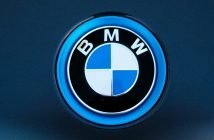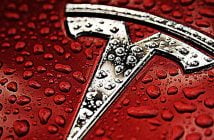+++ AUDIhas announced a significant leap in operating profit at its annual financial conference, despite sales in 2017 being just 0.6% up on the year before. Following the announcement that it will build a new Tesla Model S rival called the e-tron GT, the premium car maker confirmed that it sold 1.878.105 Audi vehicles last year, with profit before tax leaping by 57 percent to 4.7 billion euro. After-tax profits were up 68.4 percent to 3.4 billion euro. The size of Audi’s business has doubled since 2009, with revenue in 2017 hitting 60 billion euro. Although Audi’s headline profit margin for 2017 was 8.4 percent (in the brand’s target ‘corridor’ of 8-10 percent) the costs of diesel engine recall in the US and the Takata airbag recall pushed the final figure back down to 7.8 percent. Lamborghini, which falls under Audi’s control within the Volkswagen Group, sold 3.815 cars in 2017, up 10.4 percent. The headline figures are especially impressive in light of the fact that some Audi models experienced significant sales declines. The ageing A1 was down more than 16 percent to 95,725 sales in 2017 and the TT was down 23 percent to 23,899 sales. The A3 and Q3 (both set to be replaced this year) were also well down. The A3 fell 13 percent to 321,934 sales and the Q3 was down 10.5 percent to 207,774 units. However, the Audi Q7 saw very strong global sales of 106,004, up 3.9 percent, and the A5 shifted 106,824 units, up 58 percent. Audi’s biggest seller in 2017 was the A4 series, with 341,371 sales, up 1.3 percent. +++
+++ BMW ’s front-wheel drive revolution is set to kick into high gear in 2019 with the launch of the third-generation 1 Series, although the flagship M130iX M Performance model will be four-wheel drive. The next 1 Series is described by a high-ranking official as a distinct turning point for the German car maker, which last year surrendered the global luxury car sales lead to its key rival, Mercedes-Benz, for the second consecutive year. The M130iX hot hatch will be a crucial part of the overhaul to front-wheel drive as BMW tries to prove that it can offer a credible front-driven performance model alongside its traditionally successful rear-wheel-drive M cars. Currently in the early stages of development, the BMW M division’s future competitor to the Volkswagen Golf R, Audi S3 and upcoming Mercedes-AMG A35 is scheduled for launch in 2020. It will feature specially tuned version of BMW’s turbocharged 2.0-litre four-cylinder petrol engine, developing around 300 hp, together with a multi-plate-clutch xDrive four-wheel-drive system. BMW controversially halted a long tradition of rear-drive and four-wheel-drive models with the introduction of the 2 Series Active Tourer in 2014 and the subsequent launch of the larger 2 Series Gran Tourer in 2015. The car maker now plans to bolster its front-wheel drive line-up with the new 1 Series, which forgoes the longitudinal engine mounting of today’s second-generation model for a space-saving transversely mounted engine. The move is set to provide the new 1 Series with a lower kerb weight and improved packaging, together with simplified production processes and greater profitability than its rear-wheel-drive predecessor. Nothing is official just yet, although BMW production experts suggest the new model will offer savings of up to 750 euro compared with its more complex predecessor. With 91,802 sales in the first half of 2017, the 1 Series is among BMW’s best-selling ranges worldwide. It also attracts the youngest buyers of all BMW models, making it a particularly important model for the future development of the brand. The new rival to the Audi A3 is the first model to be based on BMW’s front-wheel-drive FAAR (Front Antriebs ArchitektuR) platform. According to BMW’s head of development, Klaus Fröhlich, this structure is a progression of the UKL platform that underpins the 2 Series Active Tourer and 2 Series Gran Tourer, as well as the existing Mini line-up, but with added modularity and the flexibility to support full-electric drivetrain and battery combinations. It won’t be the first front-wheel-drive 1 Series model, though. That distinction goes to the 1 Series saloon, which is based on the existing UKL platform and produced in a joint venture between BMW and Brilliance at a factory in Shenyang, China. Although it was initially considered for sale in export markets as a rival to the likes of the A3 saloon and upcoming Mercedes A-Class saloon, it will not form part of the third-generation line-up in European markets, according to BMW. Instead, BMW is lining up a new front-wheel-drive 4-door sister model to the new 3-door and 5-door 1 Series hatchback models that is likely to be called 2 Series Gran Turismo. Set for a launch in 2020, it is aimed at a niche currently occupied by the Mercedes-Benz CLA with what is described as a “more expressive design” than the existing 1 Series. As well as supporting front-wheel drive, the new FAAR platform has been engineered to offer four-wheel drive with a lower weight penalty than that of the existing 1 Series’ rear-wheel-drive-based structure. Although it is still early days, insiders suggest four-wheel drive will add some 55kg to the weight of equivalent front-wheel-drive models. Despite the switch to BMW’s latest front-wheel-drive platform, the exterior styling of the new 1 Series is set to retain the cab-back influences that have distinguished it from rivals since its addition to the BMW line-up in 2004. “It is a hugely successful model for us, so there’s no need to change the basic direction of the design”, a high-ranking BMW official privy to the appearance of the production version told. “There will be some adjustment in proportions due to the new platform, but it will continue to be instantly recognisable as a 1 Series”. These comments are backed by the latest prototypes of the new 1 Series, which reveal the model’s cab-back silhouette. As with all future BMW models, the new hatchback is set to feature its own uniquely shaped grille and headlights in a move aimed at providing greater visual differentiation between the German car maker’s individual model lines. Increases in both the wheelbase and tracks will cause the new 1 Series to grow marginally in size. It is inside where BMW’s decision to place the 1 Series on its new FAAR platform will show the biggest changes. The transverse engine-mounting and less intrusion from the transmission tunnel are set to combine with the car’s longer wheelbase and extra width to provide the new model with significantly more interior space and greater flexibility than today’s 1 Series. Prototypes of the new 1 Series, which has the internal codename F40, reveal that BMW has used the added dimensions to increase the area of the door apertures, hinting at improved entry and exit to the cabin. A longer rear overhang is also set to provide the 2019 model with greater luggage capacity than the 360 litres on offer today. The new 1 Series hatchback and its 2 Series Gran Turismo stablemate will be powered by updated versions of today’s turbocharged 1.5-litre 3-cylinder and turbocharged 2.0-litre 4-cylinder petrol engines. The more powerful versions are planned to adopt a particulate filter in an attempt to reduce CO2 emissions to a model-line-specific average of less than 120 gram/km, according to BMW engineering sources. Also, from the outset of sales, there will be revised 1.5-litre 3-cylinder and 2.0-litre 4-cylinder turbodiesel engines; the most powerful of which is set to offer up to 245 hp. The hot M130iX M Performance will follow in 2020. With doubts hanging over the future of diesel sales in many key European markets, BMW has future-proofed the new 1 Series by providing it with at least one mild-hybrid drivetrain in the form of a turbocharged 2.0-litre four-cylinder petrol engine fitted with an integrated starter motor and 48V electric system. Similar to the system Mercedes plans to bring to the new A-Class, it is claimed to provide fuel savings of up to 20 percent compared with today’s turbocharged 2.0-litre 4-cylinder 125i. As part of further plans to meet the 95 gram/km emission regulations set for introduction by the European Union in 2020, BMW is also readying a petrol-electric plug-in hybrid variant of its new entry-level hatchback. Set to rival the A3 e-tron and an upcoming electrified version of the fourth-generation A-Class, it is planned to run a similar set-up to today’s 225eX Active Tourer, with a turbocharged 1.5-litre 3-cylinder petrol engine combined with an electric motor and a lithium-ion battery pack. Details remain scarce, although Fröhlich recently hinted that future BMW hybrids will be developed to achieve a pure-electric range of more than 50 km. That suggests the new model could feature the same high-density battery cells used by the facelifted i3 for greater range than the 225eX Active Tourer, which achieves a claimed 40 kilometers. To appease customers seeking traditional rear-wheel-drive dynamics, BMW has revealed that it plans to base the second-generation 2 Series Coupé and 2 Series Cabriolet, due out in 2020 and 2021 respectively, on an updated version of its CLAR platform, meaning they will retain the standard rear-wheel drive and optional four-wheel drive of today’s models. As a consequence, the follow-up model to the existing M2 (itself to be updated in 2018 with the introduction of a new limited-volume Competition model packing the turbocharged 3.0-litre inline six-cylinder engine from the M3 and M4, with a claimed 400 hp) will also continue with a rear-wheel drive layout. +++
+++ HONDA ’s head of design Makoto Iwaki claims that the electrification of cars will have an immense impact on how future models will look like. Talking to me at Geneva about how Honda’s design language will evolve as electrification becomes more common, Iwaki said the shape of cars may change significantly. “I believe that the design will evolve due to the electrification. As you also said, it has the huge potential for different possibilities which will open up to us. Also in terms of the form or shape of the car will significantly change due to the electrification”. The shifts in the industry won’t just influence exterior design. Iwaki revealed that autonomous driving technologies will radically alter the design of the interior, too. “I think the autonomous driving technologies will significantly, drastically change the interior design as well. For example, the voice command will become dominant. Other technology will also replace all the small switches that you see on the cars”. Using the large touchscreen of the Urban EV Concept that stretches the width of the dashboard as an example, Iwaki said it provides a glimpse towards the future. However, he couldn’t say if we’ll see all the concept‘s radical interior design elements in a future production model anytime soon. +++
+++ MITSUBISHI Electric has placed a hold on plans to expand a parts factory in Mexico due to uncertainty about the North American Free Trade Agreement (NAFTA). The Japanese company intended on signing off plans to expand its facility in Queretaro, Mexico last year, but opted against making any commitments when U.S. President Donald Trump initiated the renegotiation of NAFTA. “Due to such NAFTA discussions, we are a bit hesitant to go ahead. So we are wait-and-see”, senior general manager of Mitsubishi Electric Tatsuya Ishikawa told. Despite putting its plans to expand its Mexican factory on hold, Ishikawa admitted that the parts supplier, whose biggest U.S. customers are General Motors, Ford, and Chrysler, is pondering the expansion of its current operations in the United States. “It’s very difficult to predict. We need to be very careful. It’s a big investment. We don’t want to make any mistakes”, Ishikawa said of the uncertainty regarding NAFTA. Last year, one of Trump’s key stipulations about a renegotiated trade agreement was the increase of the minimum percentage of parts that must be made in the U.S., Canada or Mexico to avoid tariffs from 62.5 percent to 85 percent. +++
+++ NISSAN ’s upcoming electric crossover will be the breakthrough model that makes battery-electric vehicles truly mainstream, according to Design Europe boss Mamoru Aoki. He told: “Of course, we have the new Leaf, but I think the production version of the IMx concept will become a breakthrough model”. The IMx concept made its debut at the Tokyo show last October, promising a 600 kilometer range on a single charge and a dual-motor, 4-wheel-drive powertrain with a proposed 435 hp and 700 Nm of torque. Nissan also says the next generation of its autonomous ProPilot technology will be featured on the IMx. “The IMx is not just a concept car. In a few years, it will appear in production”, Aoki said, hinting that it could do for Nissan what the first Qashqai managed when it was launched in 2007. His enthusiasm for the IMx is not just because it will enter a booming sector (crossover sales could account for 34% of the European market by 2020, according to some analysts) but because the taller package takes best advantage of Nissan’s EV platform. Aoki said: “The interior is notably bigger than with a conventional vehicle and there’s much more usable space, thanks to the totally flat floor allowed by the underfloor battery pack. The dashboard is also pushed right back towards the windscreen because the HVAC (heating, ventilation and air-con) unit is under the bonnet”. The overall cabin concept reflects Japanese architecture and interior design, he said, because traditional Japanese houses are tiny and some rooms have to be multi-purpose in their use. Aoki was also keen to point out the unusual interior trim in the IMx, which is an alternating laminate of wood and translucent plastic that can be illuminated from behind; a hint, perhaps, that this clever finish is heading for production. Aoki told that the exterior of the IMx is a clear indication of Nissan’s next-generation design language and the intention is to be closer to the company’s Japanese roots. He said the IMx does “not have a masculine look or a heavy appearance” of the type that is now common for mainstream combustion-engine vehicles. “It has a light feel and sheer surfaces”, he said. “The exterior is very Japanese in its details: expressive but with purity and an expensive feeling”. Aoki, who has been in charge of Nissan’s Paddington studio for only a few months, joined Nissan in 1989 and oversaw the design of 3 Infiniti models as well as the original 350Z sports car. The first car he was entirely responsible for was the highly regarded first generation Primera. +++
+++ OPEL may have recently been taken over by PSA, but the German brand continues to push forward with its SUV product offensive. My spy snappers have caught the next big addition, the new Mokka X, undergoing winter testing. Opel will make use of Peugeot-Citroen’s latest EMP2 platform architecture for the new Mokka X, which is due to arrive early in 2019. It will share much with the Grandland X as a result, but with more compact dimensions and a unique design. Inside, we’ll again see an evolution of Opel’s latest interior design, with a high-mounted central screen dominating the dash. Trademark features such as a WiFi Hotspot and the OnStar concierge service will feature. What we can comfortably speculate on is that the Mokka X will utilise PSA’s 1.2-litre 3-cylinder turbocharged petrol engines in various states of tune (110, 130 and 150 hp) as the mainstay in the range. 1.5-litre diesels would also be offered (100 and 130 hp). A 2019 debut is highly likely for the next generation Mokka X. It will be built in Eisenach. +++
+++ Audi and PORSCHE are working together to develop a next-generation electric architecture that will be used for future models from the Volkswagen Group’s premium brands. This all-new platform will be available in 3 variants, with Audi engineering 2 and Porsche 1. According to Audi technical development chief Peter Mertens, however, the 2 won’t go it alone. Codenamed PPE (Premium Platform Electric), the architecture will replace the J1 platform of the Porsche Mission E and the modified MLB that will be used by the Audi e-Tron Quattro. The PPE will use some components and technology modules from the MEB and J1, but they will be optimized to make sure they suit high-performance luxury vehicles from the VW Group. According to Mertens, Audi has abandoned its plans to create a next-generation MLB for ICE, hybrid and battery-electric powertrains in favor of the PPE: “We have changed direction. You give up too much potential if you have a platform that tries to do everything; it’s too expensive, too heavy, it has proportions that do not fit with luxury brands”. The new platform will also benefit from lessons learned during the development of the MEB architecture that will underpin more than 15 mainstream VW models by 2025. +++
+++ The SKODA Citigo is to get a fully electric version at the end of 2019, called Citigo-e or Citigo E and offering a much-increased range over the current EV version of its sister vehicle, the Volkswagen e-Up. Alain Favey, Skoda’s global boss for sales and marketing, confirmed that the car will have a range of 300 km. “The car is coming, and it will be called Citigo E. Will it have a hyphen? That’s a good question. You can call it Citigo-e if you like for now. And it will come before the end of 2019; our first step into fully electric cars. We have been waiting for the range to increase and at 300 km, we think that’s acceptable range for our type of customers”. The Skoda’s range advantage over its stablemates is not likely to be present by the time the electric Citigo reaches dealers at the end of next year. That’s because the battery developments that it benefits from are almost certain to be implemented on the e-Up and the SEAT e-Mii around the same time. The improved tech is seen by VW Group insiders as a way of transforming the 3 city cars into exclusively electric models; a switch that could happen early in the next decade. The future for the VW Group’s trio of city cars has been called into question, because they could struggle to justify the expense of developing a new platform and they’re too small to fit on the newly launched MQB A0 architecture that underpins the latest Seat Ibiza and Volkswagen Polo. +++
+++ TESLA Model 3 production was halted in the last week of February to allow the company time to fix automation issues and address bottlenecks. The car maker said the production freeze, which took place from the 20 to 24 February, would now enable it to ramp up production to 2.500 cars per week by the end of March. Prior to the production halt, Tesla employees were said to be making batteries by hand in a bid to face growing a demand backlog. An unnamed inside source told that Tesla had been “borrowing” workers from Panasonic, with which it is partenered, to speed up production. They said quality control workers were also not experienced enough to ensure the job was done well enough. But a Tesla spokesman responded by stating that the company had expected some parts of the production process to require “manual” work at that stage. “This is something CEO Elon Musk and Jeffrey Brian Straubel discussed extensively on our 3rd quarter earnings call, and it has no impact on the quality or safety of the batteries we’re producing”, they said. The firm admitted it was working to clear production ‘bottlenecks’ for the Model 3 as early as late last year. In the third quarter of 2017, only 220 Model 3s were delivered, compared with Tesla’s prediction of 1.500 stated in its 2nd quarter report. Tesla reassured stakeholders: “There are no fundamental issues with the Model 3 production or supply chain. We understand what needs to be fixed and we are confident of addressing the manufacturing bottleneck issues in the near term”. The California firm delivered 1.550 of its Model 3 cars to customers in the final 3 months of last year, short of the 4.100 expected by most industry analysts. The firm’s latest target to produce 2.500 Model 3 per week by the end of the 1st quarter of 2018 is half its original target, which was to build 5.000 cars per week. Tesla says it will reach 5.000 models per week by the end of the 2nd quarter. Despite the pushback in production for the entry-level model, for which Tesla received more than 400,000 orders in the month following its reveal, company CEO Elon Musk has remained calm in his statements and stated that issues are quickly being ironed out. The car is due to arrive in The Netherlands early next year, although Tesla is yet to confirm whether the production setbacks will affect the delivery time of Dutch-bound vehicles. Tesla delivered 29,870 cars in the 4th quarter of 2017, including 15,200 Model S and 13,120 Model X. That is broadly in line with industry expectations that the firm would deliver 30,000 cars. +++
+++ In the UNITED KINGDOM , established brands and models dominated the top10 list of best-selling cars in February and the hatchback rules supreme. However, the latest sales figures show that some newer additions to Britain’s roads are growing in popularity, despite an overall slowing down of market sales. Britain’s best-selling cars in the first 2 months of 2018 are: 1) Ford Fiesta – 13.536 registrations, 2) Volkswagen Golf – 7.237, 3) Ford Focus – 6.157, 4) Vauxhall Mokka X – 5.292 , 5) Mercedes A-Class – 5.029 , 6) Nissan Qashqai – 4.896 , 7) Ford Kuga – 4.132 , 8) Kia Sportage – 3.774 , 9) Mercedes C-Class – 3.677 and 10) Vauxhall Corsa – 3.634. +++



